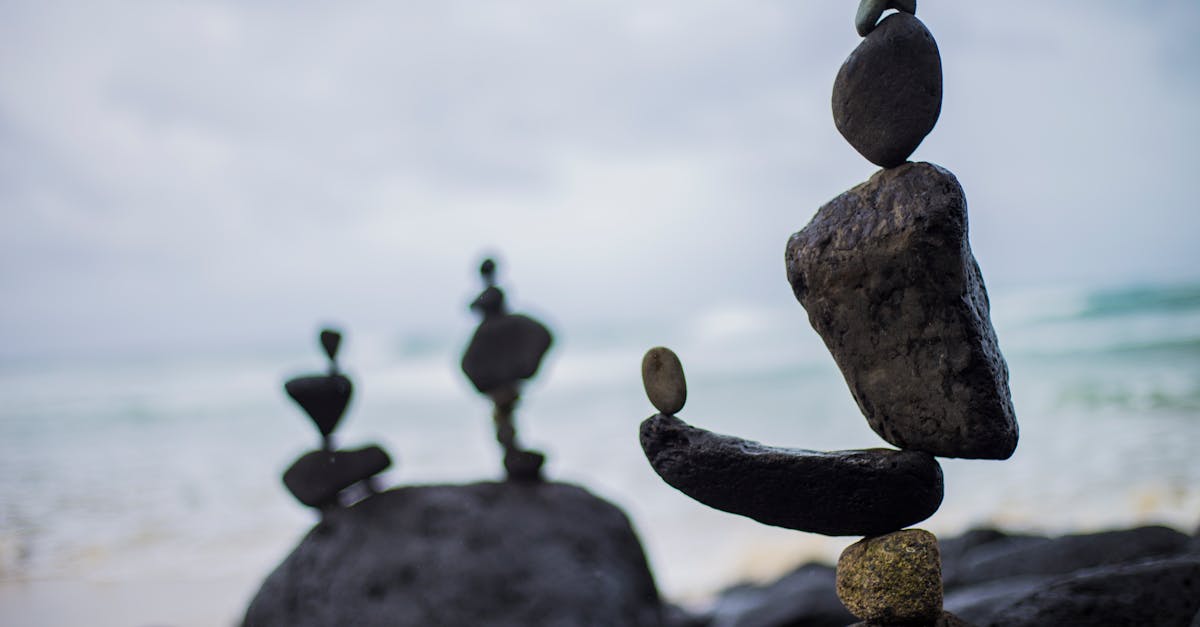How do I teach myself mindfulness?

Exploring Guided Meditations
Guided meditations are an excellent way to introduce mindfulness into your routine. These recordings typically feature soothing voices that lead you through breathing exercises, visualization techniques, and body scans. Beginners often find this structure helpful, as it alleviates the pressure of meditating alone. There are various formats available, ranging from short five-minute sessions to longer, more immersive experiences.
As you explore different guided meditations, pay attention to the style and approach that resonates with you. Some may emphasize relaxation, while others focus on awareness or self-compassion. Popular platforms like apps, YouTube channels, and podcasts offer a wealth of options tailored to different themes and needs. Experimenting with various guides can help you discover the techniques that help you cultivate inner peace and presence.
Finding Resources for Audio and Video Guidance
A wealth of resources is available for those seeking audio and video guides for mindfulness practice. Numerous apps cater to various levels of experience, offering sessions ranging from a few minutes to longer, immersive experiences. Popular options include Calm, Headspace, and Insight Timer. Websites and YouTube channels can also provide valuable content, featuring guided meditations, mindfulness exercises, and workshops led by experienced instructors.
Podcasts serve as another excellent medium for accessing mindfulness teachings and practices. Many mindfulness experts and practitioners share their insights and techniques through audio formats, allowing for convenient listening during daily activities. Consider exploring different platforms to find content that resonates with personal preferences, learning styles, and specific mindfulness goals.
Journaling Your Mindfulness Journey
Recording thoughts and feelings can enhance mindfulness practice. Journaling allows you to reflect on experiences, emotional responses, and changes over time. It creates a safe space for expressing gratitude or processing challenges encountered during practice. Writing regularly reinforces insights gained during meditation and everyday moments.
Using prompts can further guide your entries. Consider reflecting on a particular moment of awareness or noting times when you felt fully present. This encourages deeper exploration of your mindfulness journey. By revisiting previous entries, you can track your growth and recognize patterns that may emerge, enriching your overall experience.
Benefits of Keeping a Mindfulness Journal
Keeping a mindfulness journal can significantly enhance self-awareness and emotional regulation. Recording thoughts and feelings provides clarity, helping individuals identify patterns in their responses and behaviors. This process fosters a deeper understanding of one’s emotional landscape, making it easier to recognize moments of stress or anxiety. Writing about daily experiences also cultivates gratitude, shifting focus from negative impulses to positive reflections.
Additionally, journaling serves as a powerful tool for tracking progress on one’s mindfulness journey. By revisiting earlier entries, individuals can witness their growth and changes over time. It allows for the exploration of challenges faced and skills developed while practicing mindfulness. This reflective practice not only solidifies personal insights but also motivates continued commitment to mindfulness techniques and strategies.
Practicing Mindfulness with Movement
Movement can serve as a powerful anchor for mindfulness. Engaging in activities that require focus on bodily sensations encourages a deeper connection with the present moment. Whether you prefer stretching, dancing, or walking, the key is to pay close attention to your body and breath as you move. This heightened awareness can transform routine actions into opportunities for mindfulness practice.
Yoga and Tai Chi are two practices often associated with mindfulness. Each discipline promotes a harmonious blend of breath, movement, and awareness. In yoga, different postures foster physical strength while cultivating mental clarity. Tai Chi, with its slow, deliberate movements, enhances balance and center through a graceful flow. Both practices offer pathways to cultivate mindfulness in daily life, allowing practitioners to explore their inner landscapes while engaging with the world around them.
Introduction to Yoga and Tai Chi for Mindfulness
Both yoga and Tai Chi serve as excellent practices for cultivating mindfulness. These activities combine physical movement with breath awareness and focused attention, creating a holistic approach to mental and emotional well-being. In yoga, postures encourage practitioners to tune into their bodies and thoughts. Similarly, Tai Chi, often referred to as "moving meditation," emphasizes slow, flowing movements that promote relaxation and awareness of the present moment.
Participating in these practices offers a profound opportunity to connect mind and body. Practitioners can experience heightened awareness of their bodily sensations and mental state. Engaging in the rhythmic patterns of breath and movement fosters an environment conducive to mindfulness, leading to reduced stress and improved focus. Both yoga and Tai Chi can be adapted to suit various levels of experience, making them accessible for anyone seeking to enhance their mindfulness journey.
FAQS
What is mindfulness and why is it important?
Mindfulness is the practice of being present and fully engaged in the moment, without judgment. It is important because it can reduce stress, improve mental clarity, and enhance emotional well-being.
How can guided meditations help me learn mindfulness?
Guided meditations provide structured instructions that can help you focus your mind and develop mindfulness skills. They often include calming narration and background sounds that create an ideal environment for practice.
What types of resources can I use for mindfulness practice?
There are various resources available, including mobile apps, online videos, podcasts, and books. Many platforms offer free or low-cost guided meditations and courses to help you start your mindfulness journey.
How does journaling contribute to mindfulness practice?
Journaling allows you to reflect on your thoughts and feelings, helping you develop self-awareness and clarity. It encourages you to process your experiences and track your progress in mindfulness, enhancing your overall practice.
Can movement practices like yoga and tai chi improve my mindfulness?
Yes, movement practices such as yoga and tai chi promote mindfulness by encouraging you to focus on your body and breath during physical activity. They help you cultivate awareness of the present moment while also improving flexibility and strength.
Related Links
What is the difference between mindfulness and meditation?What happens when you do mindfulness meditation?